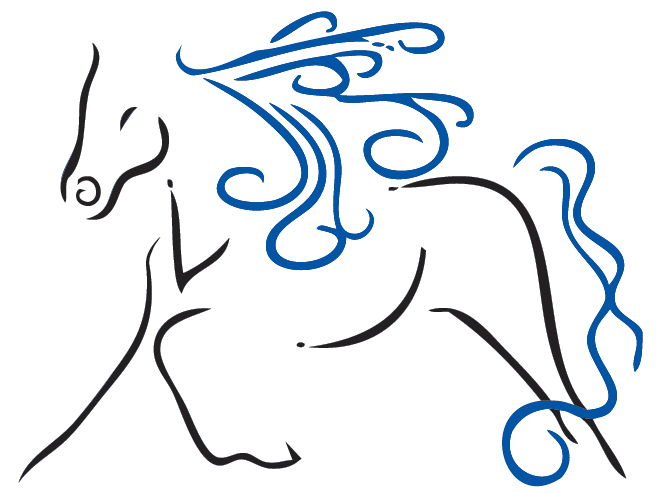Know your tools
Every discipline has their rules - rules about age, where the horse should be training-wise, what tack is to be used, what attire the rider is expected to wear. It really can be quite mind-boggling!
One thing I see over and over again - people use certain tools, such as bits, because it is expected at a certain time in the horse's training, not because it is the best tool to use to accomplish a specific goal.
My main point about this subject is that your tools have a direct effect on your horse's body.
Here are some important questions we should all ask ourselves:
- Does this tool help my horse understand my request?
- Does it help me keep my horse relaxed and connected?
- Do I know how to use it appropriately?
- Am I using it to gloss over a hole in my training program?
- How does it effect my horse's body in general?
- Does it create tension or strain somewhere?
- Do I have to adjust my own riding by using it?
Let's take bits with shanks - they certainly have their place in a horse's education. But a shank will not only amplify the signal, it also delivers the signal much faster. So would you want to place this "fast and loud" message bearer in the hands of someone who has not developed an independent seat and balances on the reins because you are showing a horse at a certain age in a certain discipline?
Should it be used "to slow the horse" because we have not taken the time to develop the basics?
Should we use this bit on a horse who has trouble bending the joints in the hindlegs since it has such a strong effect on those joints? What if we have not developed the tilt of the pelvis, evenly on both sides and a certain degree of collection? What if we have not understood that collection is not about head position but involves the entire body? And if we do, how does it impact not just those joints, but in turn the rest of the horse's body?
Not only does the horse's body tell the story, but so does your horse's behavior.
- Open mouths
- Clamped mouths
- Swishing tails
- Tense muscles
- Short steps
- a worried eye
- Tight lips
- Won't move off the leg
- over-reacts to aids
- won't respond to aids
- runs through the bridle
- won't slow down
- won't go forward
- turns like a steel pipe
It is the rare case where a stronger message becomes a clearer message to your horse. And I have never seen a positive outcome from restricting a horse. Restricting him opening his mouth by using tight nose bands, lifting his head (as in the case of draw reins), restricting forward with the use of strong bits and long shanks. It only serves us, serves us to present a picture that is actually not really there. A horse truly connected to you doesn't need to have his mouth tied shut, or have a certain bit to get him to slow down.
Every time you ignore or prevent your horse from being able to "have his say", you only create the illusion of success.
Those holes will show up time after time - either by damaging your horse's body or by creating mental and emotional resistance.
- Stiff joints
- Tight muscles such as the back or hamstrings
- restricted mobility such as in the shoulders
- resistance to the bit
- "dead mouth"
- lack of responsiveness to your aids
If any of this sounds familiar, you can change it.
You can change it by getting to know your horse's body, by evaluating WHY you are using certain tack, by valuing your horse's feedback and by engaging professionals who put your horse's well-being at the top of their list.
I absolutely know that you will have your decisions questioned, you will encounter people telling you that if you only used THIS THING you would reach your goal quicker, have your horse listen better. And by all means, listen to them. But please evaluate their motives.
If this approach is about MAKING the horse do it versus preparing your horse and CAUSING him to do what you asked, it's not progress in your training.
One of my instructors hammered this into my head over and over again:
Prepare the horse, prepare yourself, then and ONLY then ask
This means we sometimes have to take a step back. Really drill down into the problem we are currently experiencing, listen to our horse. And most of all realize that his feedback and valuing it is the best tool we have.
